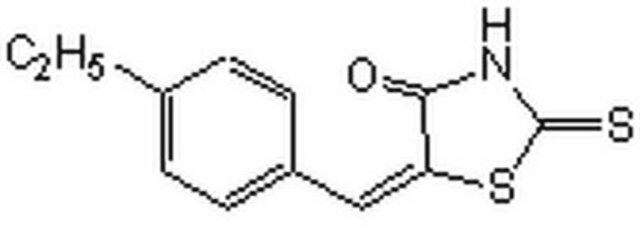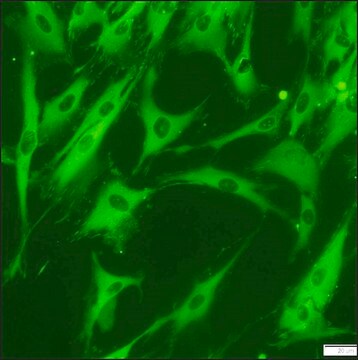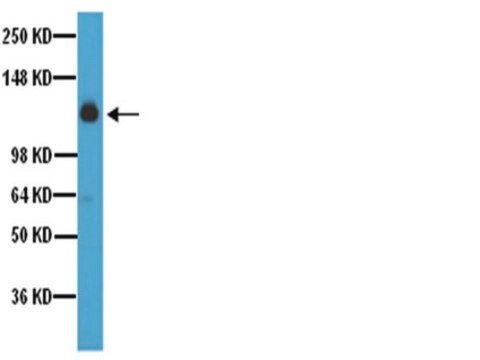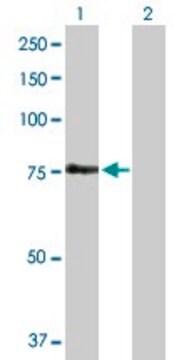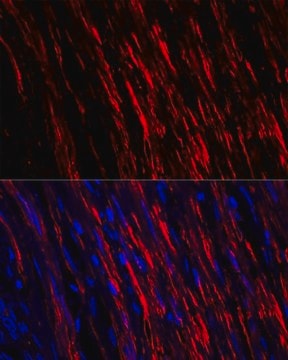AB1926
Anti-Integrin β5 Antibody, CT/cytosolic
serum, Chemicon®
Sinónimos:
Anti-Anti-AA475909, Anti-Anti-AI874634, Anti-Anti-ESTM23, Anti-Anti-[b]-5, Anti-Anti-[b]5, Anti-Anti-[b]5A, Anti-Anti-[b]5B, Anti-Anti-beta-5, Anti-Anti-beta5
About This Item
Productos recomendados
origen biológico
rabbit
Nivel de calidad
forma del anticuerpo
serum
tipo de anticuerpo
primary antibodies
clon
polyclonal
reactividad de especies
mouse, hamster, human, rat
fabricante / nombre comercial
Chemicon®
técnicas
ELISA: suitable
immunofluorescence: suitable
immunohistochemistry: suitable (paraffin)
immunoprecipitation (IP): suitable
radioimmunoassay: suitable
western blot: suitable
Nº de acceso NCBI
Nº de acceso UniProt
Condiciones de envío
dry ice
modificación del objetivo postraduccional
unmodified
Información sobre el gen
human ... ITGB5(3693)
mouse ... Itgb5(16419)
rat ... Itgb5(257645)
Descripción general
The beta5 subunit associates with alphaV forming a receptor for vitronectin. This complex is expressed in a wide range of cell types including fibroblast and keratinocytes. It is also expressed at high levels in several tumors including lung, pancreatic and mammary carcinomas. It is not expressed in lymphblastoid cells.
Especificidad
Inmunógeno
Aplicación
Immunoprecipitation: 5μL of antibody is sufficient to precipitate alphaVbeta5 from
2.5x10E6 cells.
Western blot: non-reduced conditions; do not use milk in the dilution buffer.
Immunofluorescence: 1:100.
Immunohistochemistry (Acetone Fixed) 1:40-1:80
Immunohistochemistry (Paraffin Embedded) 1:200 (ABC)
Optimal working dilutions must be determined by end user.
Descripción de destino
Forma física
Otras notas
Información legal
¿No encuentra el producto adecuado?
Pruebe nuestro Herramienta de selección de productos.
Código de clase de almacenamiento
10 - Combustible liquids
Clase de riesgo para el agua (WGK)
WGK 1
Certificados de análisis (COA)
Busque Certificados de análisis (COA) introduciendo el número de lote del producto. Los números de lote se encuentran en la etiqueta del producto después de las palabras «Lot» o «Batch»
¿Ya tiene este producto?
Encuentre la documentación para los productos que ha comprado recientemente en la Biblioteca de documentos.
Nuestro equipo de científicos tiene experiencia en todas las áreas de investigación: Ciencias de la vida, Ciencia de los materiales, Síntesis química, Cromatografía, Analítica y muchas otras.
Póngase en contacto con el Servicio técnico